Cannondale’s Scalpel is one of the lightest cross country bikes out there. As you would expect from a World Cup race bike, shedding grams is a top priority, especially for the Lab71 edition Scalpel that Charlie Aldridge and his Cannondale Factory teammates race. I mean, Cannondale went as far as to cut one of the fork legs off to keep weight down.
Given that focus for the frame, it would make sense that every other part on the bike is equally as focused on minimising weight to gain any advantage possible. Right? Well, maybe not.
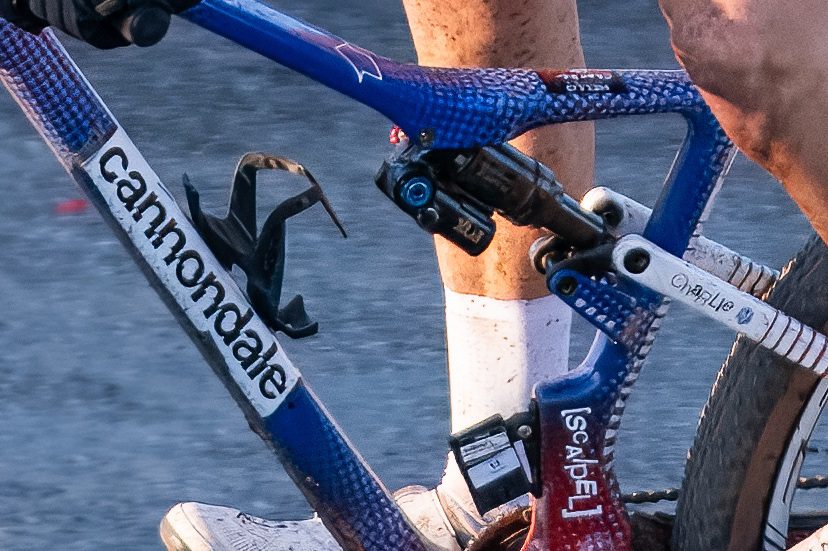 Not the outline of the Float Sl, with that piggyback, or a normal Float X.
Not the outline of the Float Sl, with that piggyback, or a normal Float X. 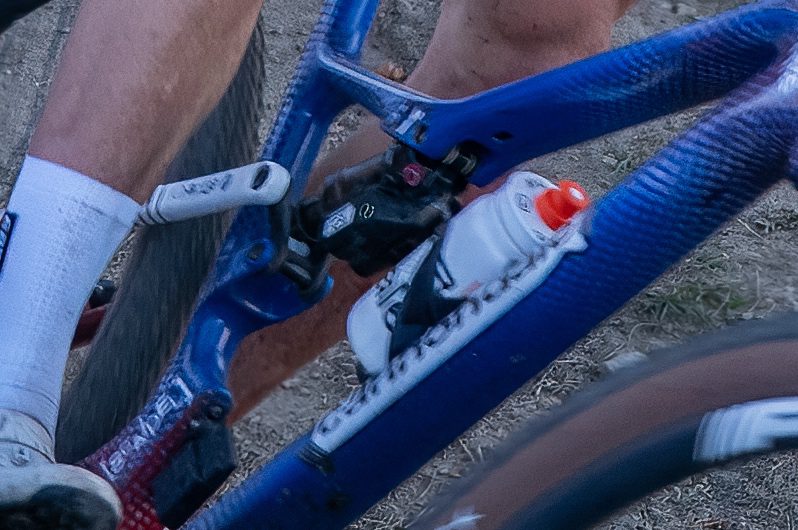 Aldridge was moving fast, but you can see the green light of the Neo system working
Aldridge was moving fast, but you can see the green light of the Neo system working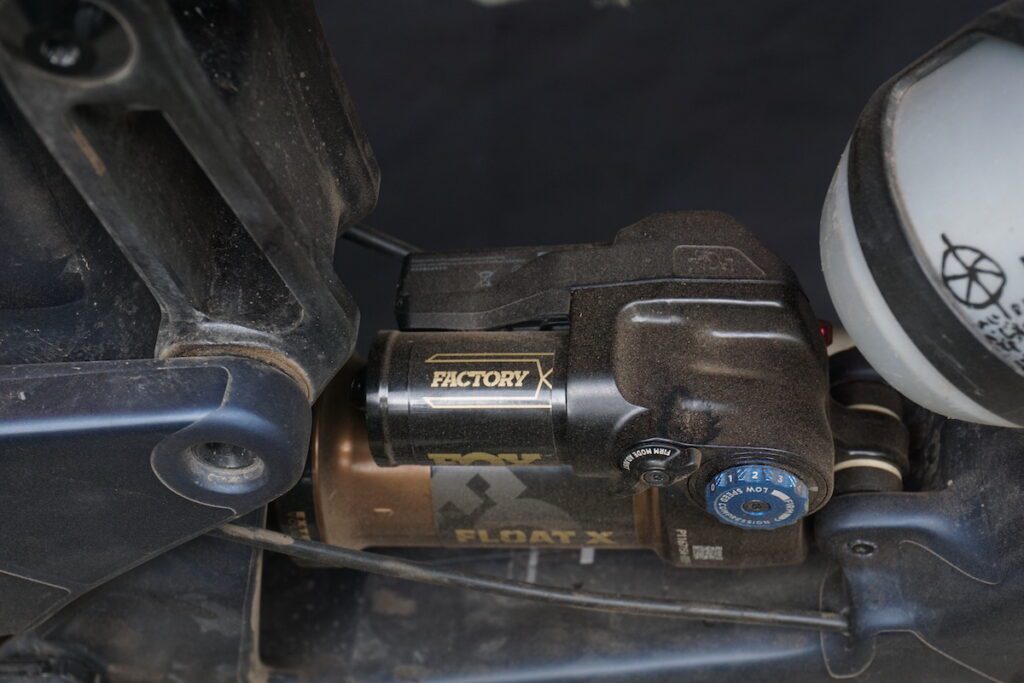 Fox Float X Live Valve Neo, sitting still and clear
Fox Float X Live Valve Neo, sitting still and clear
Scalpel Neo?
At Mont-Sainte-Anne, Aldridge added weight to the Scalpel to go faster, and win Sunday’s XCO finale. The Brit was spotted with Fox’s electronic Float X Live Valve Neo shock squeezed into the Cannondale frame.
Developed for enduro and downhill racing, Live Valve Neo was never really intended for the cross country crowd. Fox was upfront and honest about that when it was released. Unlike the original Live Valve wired system, and unlike RockShox’ Flight Attendant system, Neo only changes the rear shock.
The Float X is also, as you would expect, a fair bit chunkier than the brand’s Float SL. 669g vs 310g, depending on spec. Not a small difference in the cutthroat realm of World Cup XC racing.
Fox Live Valve Neo simplified and elevated electronic suspension
The change in spec obviously worked out. Live Valve Neo is designed to firm up when riding flat or uphill and open up when descending or when climbing more technical sections, switching automatically between the two modes. In the latter situation, the system ideally opens the shock after the front tire hits something like a root or rock on time to allow the rear suspension to absorb the obstacle without the rear wheel losing traction or bouncing. Fox makes Live Valve Neo highly customisable, so Aldridge and Cannondale would be able to tune the shock to say how firm it is, how long it stays open after detecting an impact and several other factors that might be altered to better suit XC racing.
Lockout levers are pretty common, if not ubiquitous in cross country racing at the World Cup level. It’s obviously an advantage if your shock can automatically switch between open and locked-out for you, and do so far more often than you’d be able to on your own.
 Aldridge all alone at the finish line in Quebec. Photo: Colin Field
Aldridge all alone at the finish line in Quebec. Photo: Colin Field
A Neo future?
Fox says the system wasn’t designed for XC but, with at least one XC racer using it successfully, it will be interesting to see if the brand comes out with a Neo version of, say, it’s Float SL. That still wouldn’t change the fact that Neo only alters the shock, without changing the front wheel. But Aldridge thought that was enough of an advantage on its own.
We tested the Live Valve Neo system, though not with cross country racing in mind. It’s definitely an advantage, and huge improvement over the original Live Valve system, for trail riding and enduro racing. It’s interesting that riders like Aldridge see it as beneficial enough to justify the added weight.
Aldridge isn’t the only Cannondale rider playing around with interesting tech. Canada’s Cole Punchard had some interesting things going on on his Canada-edition Scalpel Lab 71 at worlds.
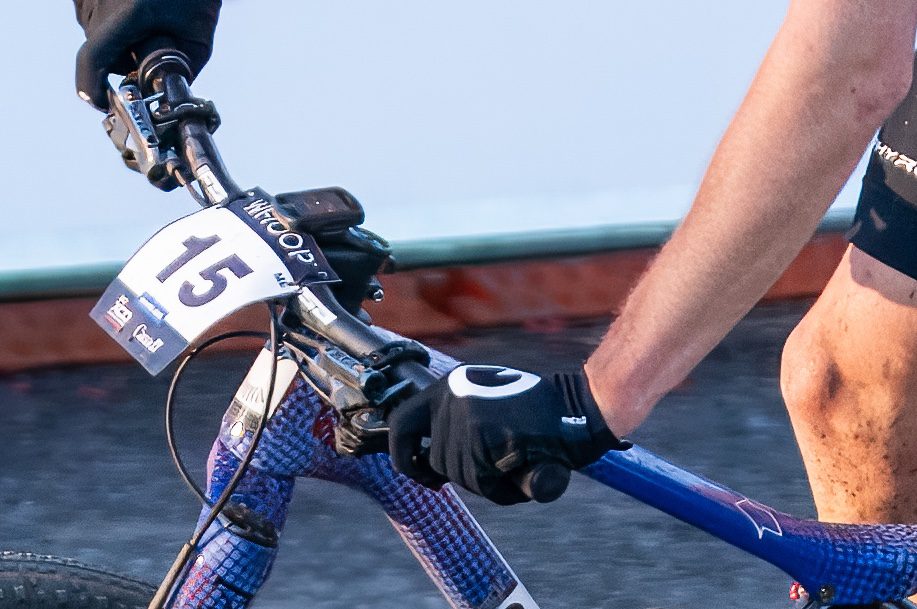 Shimano XTR trail levers, instead of the lightweight XC version
Shimano XTR trail levers, instead of the lightweight XC version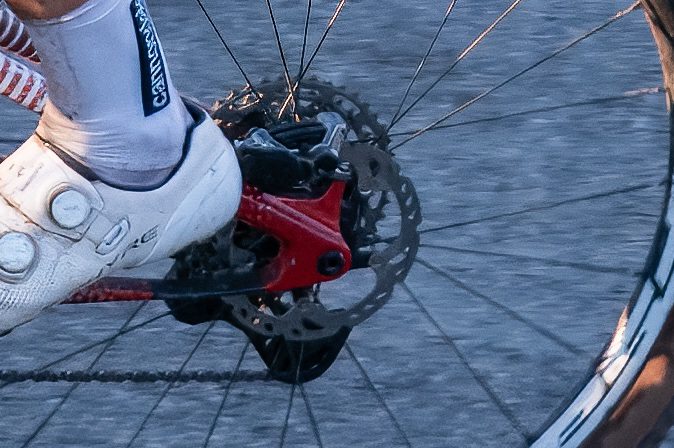 The outline of a four-piston XTR trail calliper, not the two-piston option
The outline of a four-piston XTR trail calliper, not the two-piston option 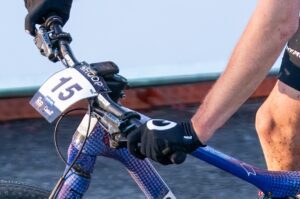
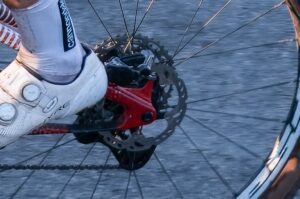
Some serious Shimano action for an XC race
The electronic shock was not the only bit of heavy-duty tech on Aldridge’s MSA-winning bike. Shimano XTR brakes seen on the rig were the four-piston callipers and trail brakes. Shimano offers a lighter version at both ends of the hose – an XC lever and a two-piston calliper – but apparently weight isn’t everything. On the wildly technical MSA course, it seems control is as important, and as fast, as uphill efficiency.
The unreleased tech Canadians rode to worlds wins and podiums
On the efficiency side, though, Aldridge opted, like his teammate Alan Hatherly, for the compact version of Shimano’s XTR Di2 wireless drivetrain. That uses a 9-45 cassette and short cage rear derailleur instead of the standard 10-51 cassette. Shimano says the overall weight difference between the two versions of its new wireless drivetrain is around 70grams. After spending some time on our own XT compact group, we’ve discovered there are other efficiencies, beyond just lighter weight.

